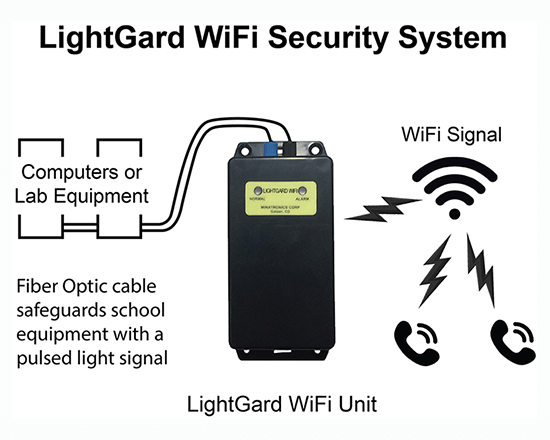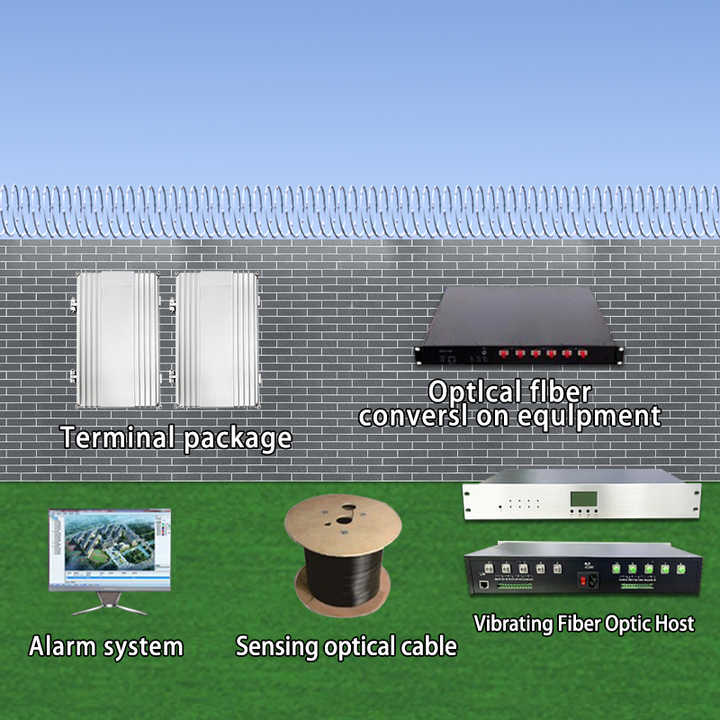Benefits a Fiber Optic Security System for Residential Security Installations
Benefits a Fiber Optic Security System for Residential Security Installations
Blog Article
Why Fiber Optic Safety Systems Are the Future of Protection
The change to fiber optic protection systems notes a significant improvement in the realm of security, driven by their outstanding data transmission capabilities and strength to outside disturbances. These systems not just help with faster and extra trustworthy communication but additionally offer a cost-efficient service with reduced maintenance demands. As the landscape of protection develops along with arising innovations such as AI and IoT, the possibility for fiber optics to enhance and redefine safety and security facilities becomes increasingly noticeable. The ramifications of these developments raise important concerns concerning the future of safety steps and their performance in an ever-changing environment.
Benefits of Fiber Optic Solutions
One of the key benefits of fiber optic systems is their superior bandwidth capability, which promotes the transmission of huge quantities of data over cross countries without considerable loss. This particular is especially helpful for safety and security applications that require the continuous tracking and transfer of high-definition video feeds, sensing unit data, and various other essential info. Optical fiber can fit the growing needs of modern security systems, making certain that information continues to be undamaged and trustworthy.
Additionally, fiber optic cables are much less at risk to electro-magnetic interference, which can be a substantial problem in environments with numerous digital gadgets. This resistance improves the honesty of the information being sent, thus reducing the threat of information violations or system failures. Moreover, fiber optic systems are naturally a lot more safe than traditional copper cables, as taking advantage of a fiber optic line without detection is exceedingly tough.
The toughness of fiber optic cords also adds to their charm. They are resistant to ecological elements such as wetness and temperature level variations, minimizing upkeep costs and boosting system durability. In general, these advantages position fiber optic systems as a robust and efficient option for modern safety and security facilities, ensuring reliable and safe and secure information transmission.
Enhanced Data Transmission Rate

The capability to send substantial amounts of data swiftly helps with the seamless integration of high-definition video feeds and progressed analytics. Safety systems can now process and evaluate details in real-time, improving action times and situational understanding. Additionally, fiber optic links sustain longer transmission distances without degradation of signal top quality, making them excellent for extensive protection networks.
The enhanced speed of fiber optic systems not only boosts the efficiency of safety and security procedures however also index lowers latency. This is especially vital in essential situations where prompt decision-making can prevent safety breaches or mitigate prospective dangers. As organizations proceed to prioritize security and effectiveness, the need for rapid and trustworthy data transmission will unquestionably strengthen fiber optic systems as a foundation of modern-day safety and security framework.
Resistance to Disturbance
Fiber optic safety and security systems constantly demonstrate phenomenal resistance to electro-magnetic interference, a critical benefit in environments susceptible to electronic noise. Unlike typical copper cords, which can be negatively affected by electro-magnetic areas, superhigh frequency interference, and various other kinds of electrical disruption, fiber optic cables make use of light to transfer data. This integral residential property makes certain that the signals continue to be clear and unaltered, despite surrounding digital activity.
Using glass or plastic fibers in fiber optic innovation creates an obstacle versus interference, permitting for reliable information transmission also in difficult situations such as commercial centers, urban locations with high electronic traffic, or areas near radio towers. This particular considerably minimizes the likelihood of signal degradation or loss, making fiber optic systems particularly ideal for safety and security applications where integrity and precision of information are extremely important.
Moreover, this resistance to interference boosts the total efficiency and integrity of protection systems, making certain that monitoring and alert systems operate perfectly. In a globe where safety and security is increasingly intimidated by innovative innovations, the durability of fiber optic systems attracts attention as a pivotal function, reinforcing their status as a necessary component of contemporary safety infrastructure.
Cost-Effectiveness In Time
Significant cost financial savings can be achieved gradually with the application of fiber optic safety and security systems. While the preliminary investment might appear greater compared to conventional copper-based systems, the long-term monetary advantages come to be evident through reduced functional and upkeep costs (fiber security). Fiber optic cords are naturally much more sturdy and much less vulnerable to ecological aspects, which translates to lower Check This Out substitute and repair service expenses over their life expectancy
Additionally, fiber optic systems call for much less power to operate, which further decreases power expenses. Improved information transmission capabilities permit fewer repeaters and amplifiers, lessening devices investment and simplifying installment processes. The scalability of these systems additionally adds to cost-effectiveness, as companies can expand their security framework without sustaining substantial added costs.
An additional variable to think about is the enhanced effectiveness in monitoring and response capabilities that fiber optics give. Enhanced real-time data transmission can lead to quicker case action times, possibly mitigating losses and responsibilities connected with safety breaches. Altogether, the long-term benefits of fiber optic safety and security systems not just justify the first expenditure yet also place them as an economically prudent option for companies seeking robust security services.

Future Developments in Protection
Advancing innovations are established to change protection systems, integrating expert system (AI) and device understanding to enhance threat detection and response capabilities. These advancements will certainly allow security systems to examine vast amounts of data in real-time, recognizing patterns and anomalies that indicate prospective threats. This positive approach will certainly make it Recommended Site possible for quicker decision-making and extra reliable incident feedbacks.
In addition, the incorporation of the Web of Points (IoT) is leading the way for interconnected safety and security gadgets, using comprehensive monitoring and tracking. Smart sensing units can communicate info regarding ecological changes, while automated signals can inform security employees quickly of questionable activities.
Additionally, the evolution of biometric technologies will certainly additionally boost safety mechanisms. Facial acknowledgment, fingerprint scanning, and retina identification are ending up being more innovative, giving layers of authentication that are difficult to bypass.
Final Thought
To conclude, fiber optic security systems represent a significant improvement in security modern technology, offering unmatched data transmission speed, resistance to electromagnetic interference, and long-term cost-effectiveness. As the need for sophisticated security solutions remains to grow, the combination of fiber optics with emerging innovations such as AI, IoT, and biometrics will even more enhance protection facilities (fiber security). The combination of these developments will certainly make certain a much more protected and responsive atmosphere, strengthening optical fiber as a cornerstone of future protection systems
Report this page